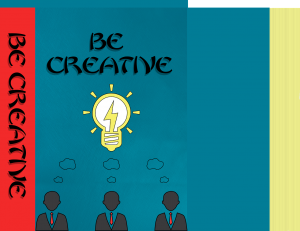What Is the Book Cover
- Images: the artwork or photos
- Words: the fonts of titles and content
- Content: title, taglines, back-cover description, and bio
- Blurbs: endorsements
Good Book Covers
A good book covers will:
- be more than a lovely cover; it will communicate.
- capture the essence of the story.
- be a reader’s first interaction with an author’s story and style.
- shape the store browser’s opinion of the story.
- market and advertise the book.
- be displayed on bookmarks, posters, book blogs, and other media.
- make its observer wonder.
- be created for the same audience as the story was written for.
- vie for browsers’ and book buyers’ attention.
- beg those perusing to take a second glance.
- compete for the attention of busy book reviewers.
- have a nice balance between the images and words and fonts.
- remain within the norms of its genre, but be noticeable.
- symbolize what will gradually be more obvious to the reader as he reads the story.
- portray the tone and genre, as well as mood and theme.
Why a Book Cover Works
- A well-designed cover tells the browser that the content has value to the customer.
- For first-time authors, a great cover will make up for anonymity.
- Interesting, intriguing covers shout interesting and intriguing story (and vice versa).
What Is Used in Creating a Book Cover
- Depending on what’s available, some notes, a synopsis, the manuscript, and/or information about the author to understand his style.
- Information about the period, season, and setting.
- An idea of the story’s tone and mood.
- Example book covers or photos.
- Listed items important to the story, such as people or animals; be specific as to the type.
- Physical descriptions of the hero and the heroine.
How Authors Are Involved
Sometimes authors are:
- not afforded input.
- asked for limited input.
- sent mock-ups and asked to choose one.
- ignored as to their input and choices.
- wise to let the professionals do their job.
- resigned to love or hate their covers.
When You’re Asked for Input, Take Advantage
- Spend time in a bookstore and
- notice what covers have interested browsers,
- study covers in your genre that target your audience, and
- evaluate what makes books stand out.
- Suggest colors to be used. Red, yellow, and orange are considered high-arousal colors and make items appear closer. Blue, green, and purple are low-arousal colors and make things seem farther away.
- If you have a series, ask that certain words, fonts, or images be replicated to identify the book as part of a series.
- When choosing example photos, remember simplicity outranks complexity. Unnecessary items are distracting.
Help in the creation or input for your book cover’s design. Click to tweet.
What in a book cover grabs you when you’re browsing?






 RSS - Posts
RSS - Posts



I enjoy your blog posts, Zoe. I have run the gamut from publishers who let me have a lot of say and let me join in the process–after all, the story is my vision–but others who send me a design I must accept without question only making sure my name is spelled correctly. Sheesh. Best wishes!
Hey, Tanya. When I was researching this, a woman author said she was embarrassed with her cover. That would make it hard to promote.